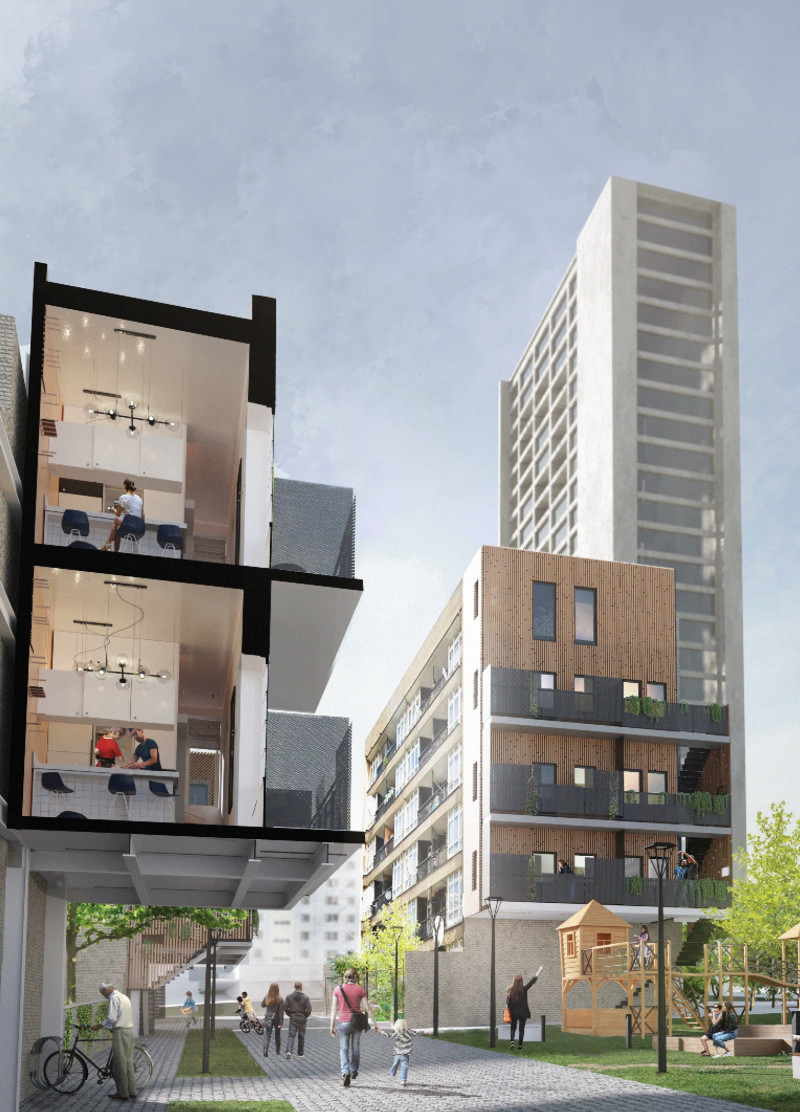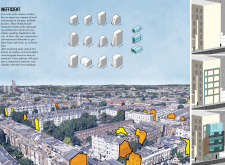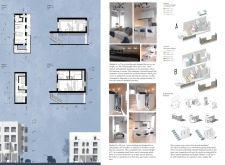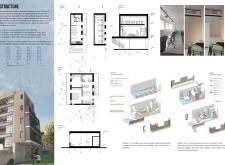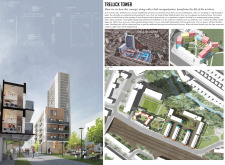5 key facts about this project
The design introduces a new way of living in London, focusing on the common issue of blank facades that leave areas feeling incomplete. The aim is to turn these empty spaces into usable living areas with micro-dwelling units. Located within a bustling urban environment, these units strive to bring life back to overlooked sections of the city while encouraging connections among those living in them.
Modular Design Approach
Different types of modular units have been developed, known as Module A, B, C, and D, each designed for specific needs. Module A is a compact 19 square meter space suitable for one or two people. Its 3.5-meter ceiling creates a sense of openness, and the mezzanine provides a raised area for sleeping. This clever use of space also allows for a bathroom placed conveniently beneath the sleeping area.
Module B is larger, at 39 square meters, and designed for small families. Its two stories provide ample space for living. The first floor follows the layout of Module A, ensuring functionality and familiarity. The second floor has a ceiling height of 2.5 meters, promoting an open environment. The design encourages social interaction and moves away from the feeling of isolation often found in residential units.
Adaptive Use of Space
Module C is intended as an office unit, suitable for less accommodating locations, such as those situated above busy roads. This flexibility is important, as it allows for mixed-use environments where workspaces can live alongside homes. By blending these functions, the design maximizes urban space while addressing the needs of modern life.
Focused on Inclusivity
Module D caters specifically to seniors, incorporating a single-story layout that features wider walkways and door openings. This careful consideration enhances mobility for elderly residents. The restrooms are designed to be accessible, ensuring that all aspects of daily life are considered.
Materiality and Sustainable Features
The choice of materials reflects an emphasis on performance and sustainability. Plywood is selected for its lightweight yet durable qualities, while wood flooring enhances warmth and comfort. A vapor barrier is included to manage moisture, and thermal insulation contributes to energy efficiency. Together, these elements create a living space that is not just functional, but supportive of its inhabitants.
Overall, the design presents a thoughtful approach to urban living. By focusing on micro-dwellings, it showcases how neglected areas can be revitalized and transformed into spaces that foster community interaction. The attention to layout and choice of materials reveals a practical vision for modern urban life, one that promotes both comfort and accessibility.


